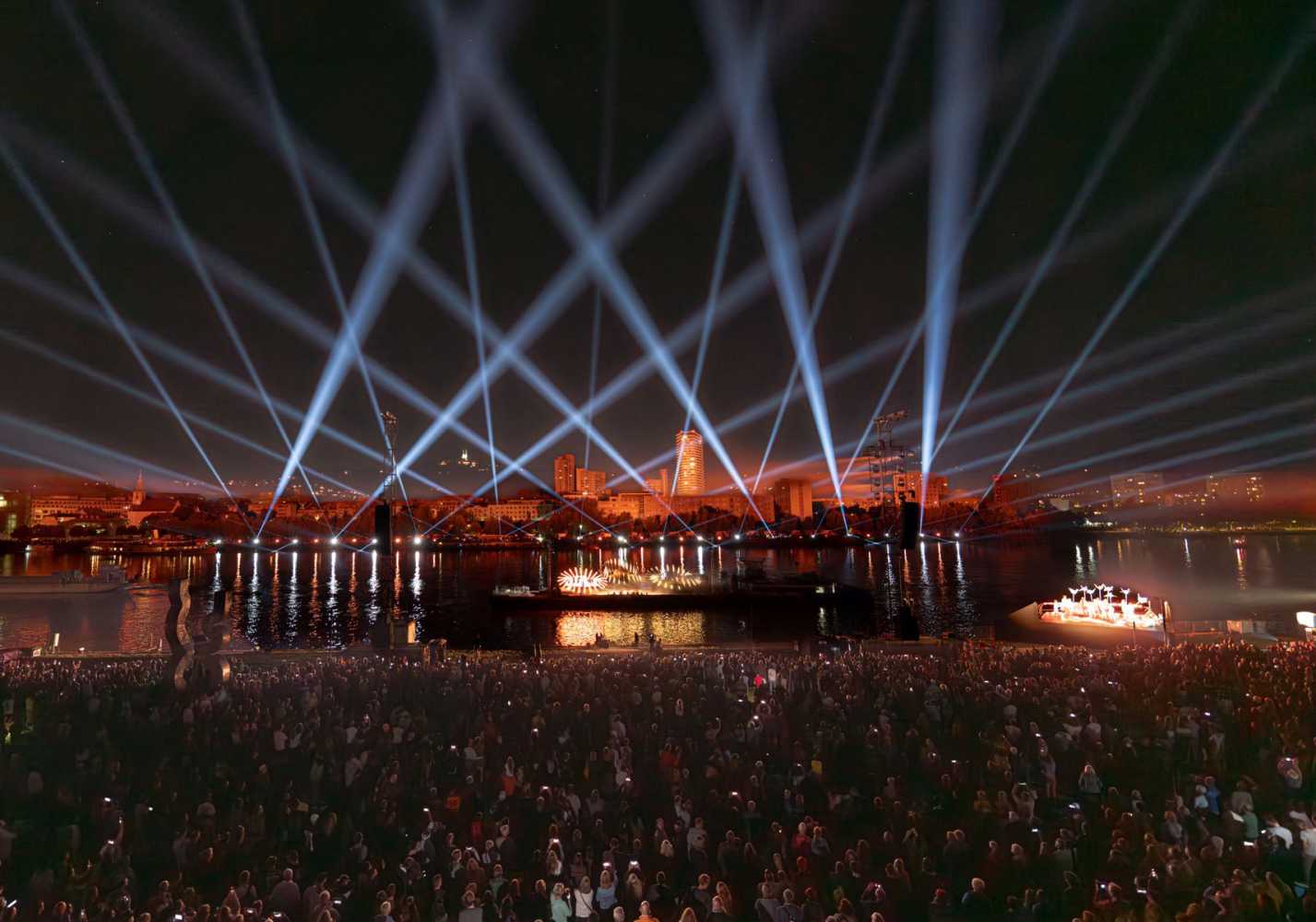Elation lights Linzer Klangwolke open-air spectacular
- Details

Organised by the Brucknerhaus Linz congress centre, the Linzer Klangwolke (Linz Cloud of Sound) is an open-air spectacle that attracts around 100,000 spectators each year to Danube Park in the town of Linz. This year, a moving, somewhat dystopian yet hopeful piece entitled Odyssey. A Journey Through Worlds was performed on 9 September. The odyssey, a little girl's journey on the river of life towards the source of renewal, literally took place on the waters of the Danube. With three floating platforms, an additional stage on land and the surrounding riverside scenery, the setting for the spectacle was extremely spacious.
“The dimensions and distances at the Linzer Klangwolke are much larger than at other shows,” confirms Manfred Nikitser. “The entire stage area is approximately 1000 x 600m, and the audience is also at least 150m away from the action on stage. I knew from the start that we would need particularly powerful beam lights for this; ultimately, I wanted to make the scene so large that the panorama of the city of Linz would also be a part of it.”
The designer planned to use a series of beam lights on the bank opposite the audience and, for this purpose, carried out a test setup in July with moving lights from several manufacturers.
Manfred comments: “We wanted to test under real conditions how the different lights work. I planned to have moving lights spread over a kilometre route and 500m away from the audience. This is anything but day-to-day business. The Proteus Excalibur proved to be by far the best solution for this purpose. The output, beam characteristics, colour wheel configuration and speed immediately impressed us.”
Some 40 Proteus Excaliburs were spread over a kilometre along the banks of the Danube, creating a generous visual framework for the production moving on the river.
In order to illuminate the Linz skyline and include it in the production, another powerhouse lighting fixture was sought. Manfred also tested a number of possible candidates for this application in advance. “I wanted the audience to know where they are,” he emphasised. “That’s why it was important to me to make the water of the Danube and the city of Linz visible instead of just illuminating a beautiful stage in a black hole.”
Manfred had already seen the Proteus Brutus during a demo at the Elation world headquarters in California and shortly thereafter was sent a fixture to test by Marc Petzold from Elation’s German partner LMP. “Marc knows that I do a lot of large outdoor applications,” Manfred said, “including remote follows so he wanted to hear my opinion of the Brutus. At that time, I was preparing for the Klangwolke. That’s when the spotlight came along.”
Manfred and his team tested the Proteus Brutus with the pre-installed diffuser lens and were “already impressed by the output.” He continues: “I identified at least 20 different types of lights that could be considered for this purpose and made countless calculations based on the photometric data. The Proteus Brutus won the race. No other lamp can provide this brightness onto the other side of the river. The IP rating was an additional advantage that was not initially included in the specifications, but made it even easier.”
Ultimately, Manfred and his team took advantage of the option to remove the diffuser lens of the Brutus in order to use the fixture as a wash beam. In this way, it was possible to get even more output from the light and achieve stronger mid-air effects. In the end, 24 Proteus Brutus were placed on the public side of the Danube and projected in the opposite direction.
After the performance, the press and audience agreed that this was one of the best Linzer Klangwolke events of all time, a result that can be attributed to an outstanding team effort. The international creative team came predominantly from the theatre world. Director Francesca Zambello specifically brought Manfred Nikitser on board because she knew that, as a lighting designer focused on rock 'n' roll and open-air events, he would have the right vision for a project of this magnitude.
“The Linzer Klangwolke was created in close collaboration between those responsible for set, video, lighting, music, acting, dance and artistry. A good show only comes about when all elements of the production literally merge with each other. We succeeded. The team worked together wonderfully and it was a great pleasure for me and my crew to be a part of it.”
















